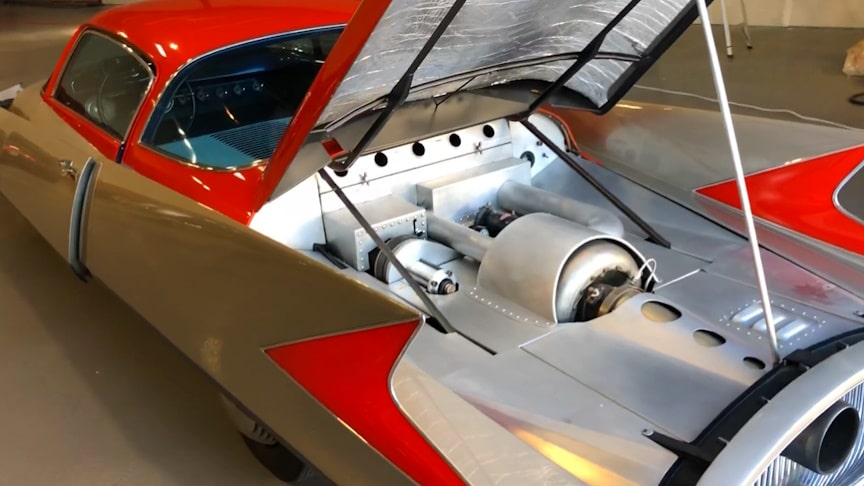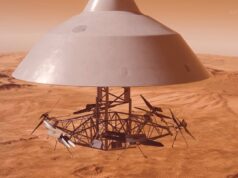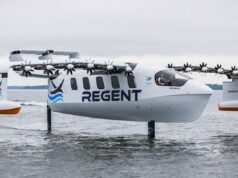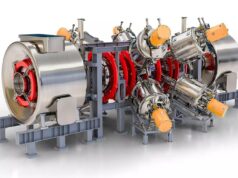This aircraft-powered car was designed by Italian chief designer Ghia Giovanni Savonuzzi , for Virgil Exner , American chief designer of the Chrysler group .Like many futuristic concept cars from the era of the ” supersonic jet era and the American space age of the 1950s “, this ” Streamline Moderne ” style concept car is designed in the shape of a rocket plane , with a fastback rear in the shape of an airplane reactor with fins inspired by aeronautics.
source.image: Erik Bergman
The combination of Italy’s design visionary Giovanni Savonuzzi and the post-war jet age let to the creation of the one-off Ghia Streamline X Gilda. The car received it’s ‘Gilda’ nickname from the famous 1946 film starring Rita Hayworth, who was described as having “sleek lines and dangerous appeal.” Savonuzzi felt the same way about his creation and the nickname stuck. video Blackhawk Museum:
The vehicle is fitted with a single stage gas turbine that delivers power to the wheels via a reduction gearbox coupled with a hydrostatic transmission. The starting and driving procedure is very different from other vehicles seen on the road today. Blackhawk Museums Executive Director, Tim McGrane, explains the process and what it’s like to drive such a unique vehicle.
Advertisement
Gilda is superbly constructed, with a sturdy, elegant aluminum body atop a square tube chassis, a separate aluminum floor for the passenger compartment and a full belly pan for aerodynamic efficiency.video: Erik Bergman:
Inside, it is both stark and stylish. The futuristic interior seems simple by today’s standards, but it incorporates key driving features that visualized the cars of tomorrow. For instance, there are no pedals on the floor, with acceleration and braking controlled by aircraft-like hand levers. A lightweight, compact single-stage AiResearch turbine was fitted into Gilda, and Savonuzzi’s vision of a half-century prior was finally realized. Computer and wind tunnel modeling have determined that the 70 HP turbine would be capable of propelling the car up to 160 MPH.











